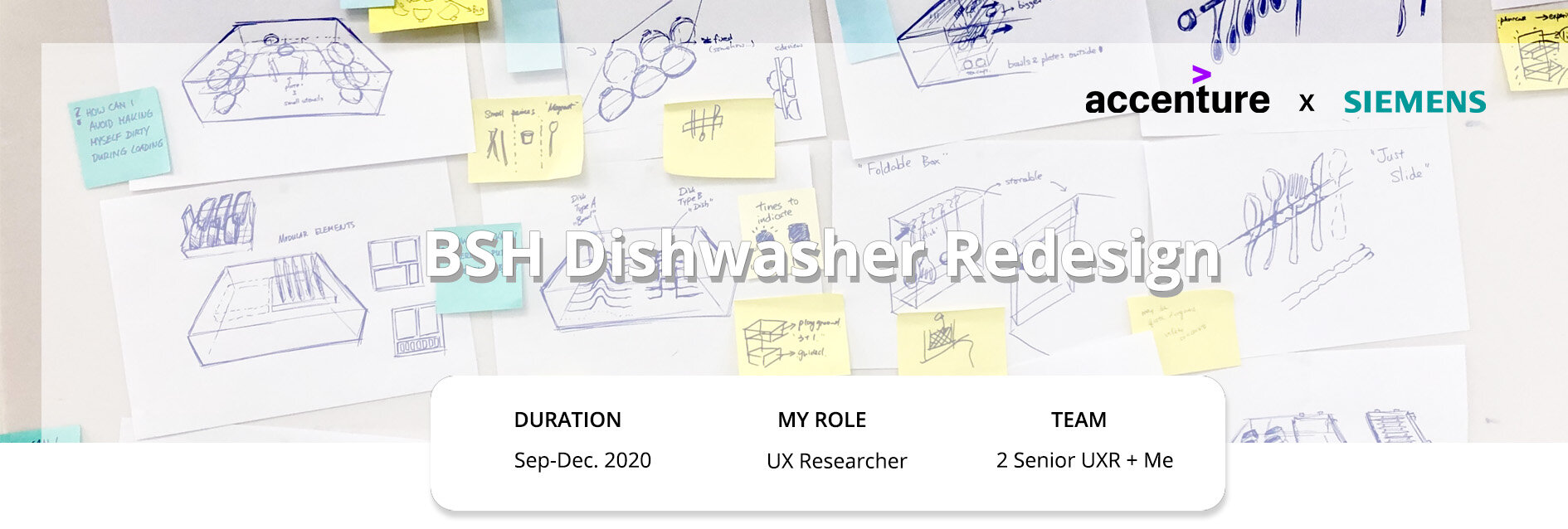

This project is a co-creation between Siemens and the Accenture Design team. Our client Siemens Bosch wants to innovate the design of their dishwashers to take a larger market share in China in the future. A deep understanding of Chinese dishwashers’ users became very important.This project spanned three months and covered the process from user research, prototyping to concept development
Today, 60 years after China's reform and opening up, more and more small appliances have entered Chinese families: washing machines, air conditioners, refrigerators, and microwave ovens. However, due to some cultural, living habits, and economic reasons, dishwashers have not been accepted by the majority. In recent years, some small companies have noticed this potential business opportunity and are racing to improve the design of dishwashers to cater to the needs of Chinese families. Our customer Siemens wants to maintain its market leadership and increase its dishwashers’ sales and market share in China.
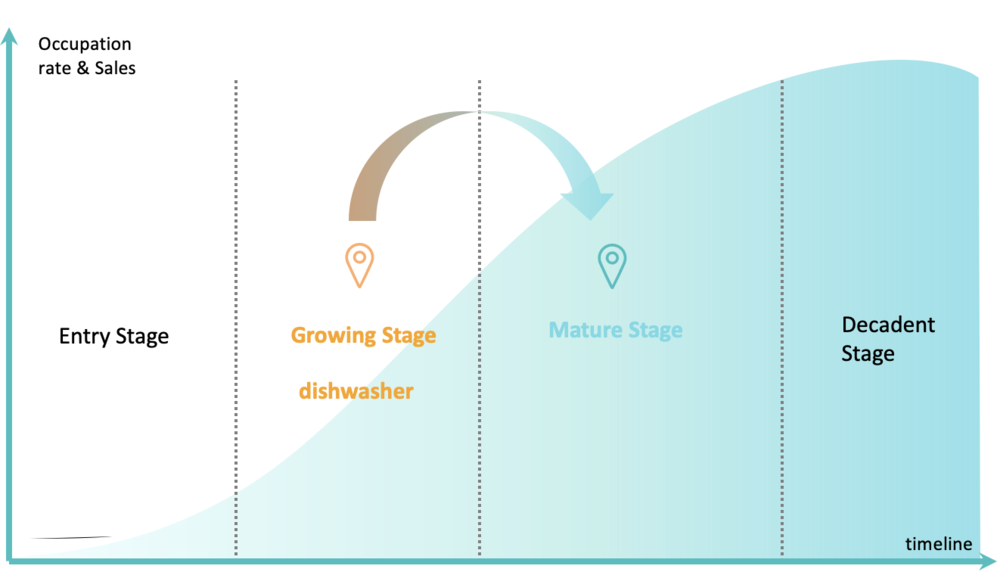
The solution to the design problems should be totally shaped by users, not a book, an expert, or someone who is your competitor. We have confidence in our design because every decision we made is based on a concrete understanding of our users’ needs. The only reason we did the competitive analysis at the end of the process is only for double-check.


Why we should care about “Cultural Context”?
Thinking from the perspective of cultural context will help us to get a deep understanding of the Chinese Kitchens, so we can design a dishwasher that better fulfills Chinese families’ needs.
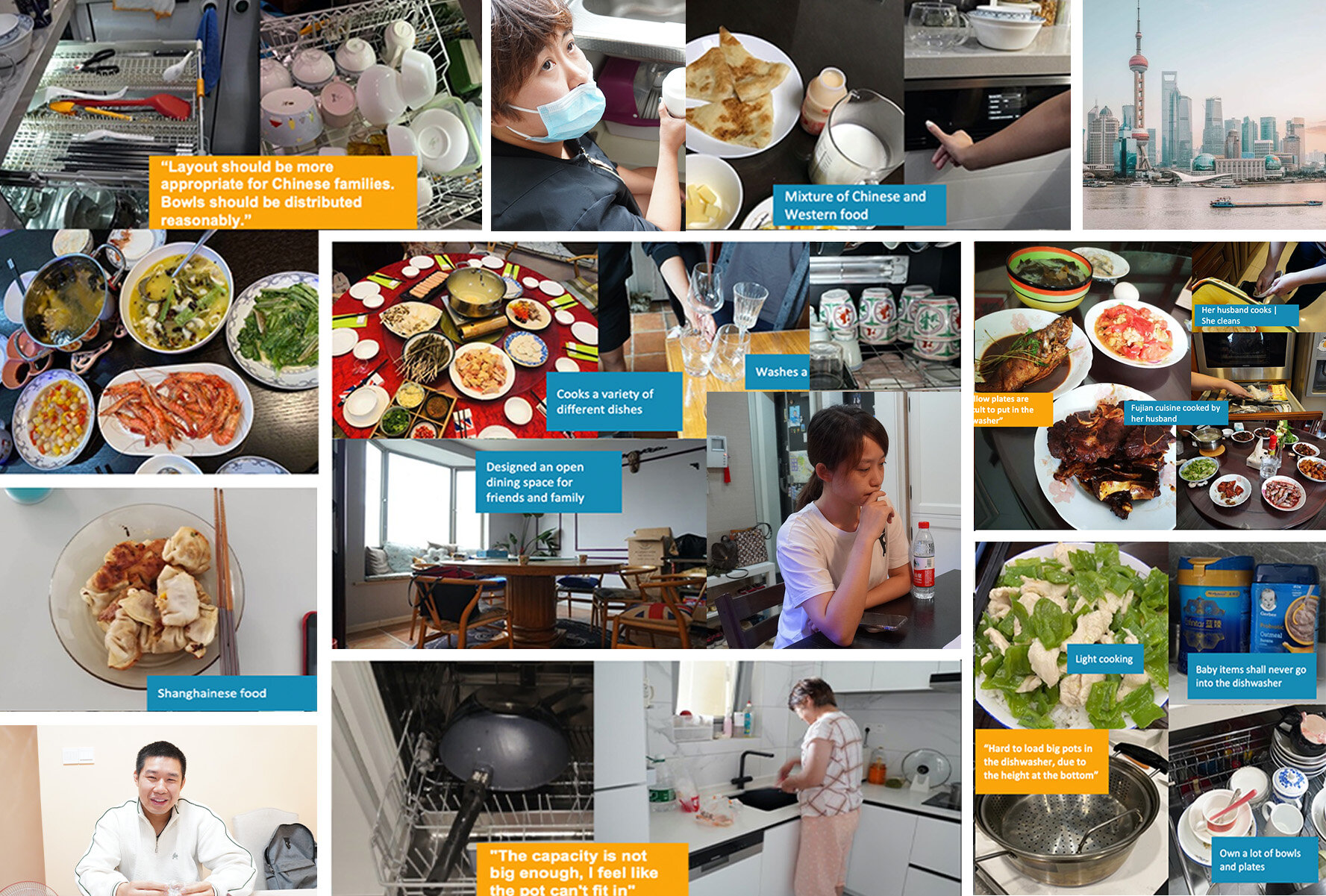
Chinese kitchen may look a little bit chaotic, but it is full of love ❤️ Food is the love language. If our design can be accepted by more and more Chinese families, we can help to release one from the washing load and help them to express their love to their family more easily.
In this project, we carefully selected 6 users who come from different family structures: newlyweds, core family, dinks, etc. We had an in-depth interview with them about their eating habits and the way they use the dishwasher. (Code names were used to protect their confidentiality)
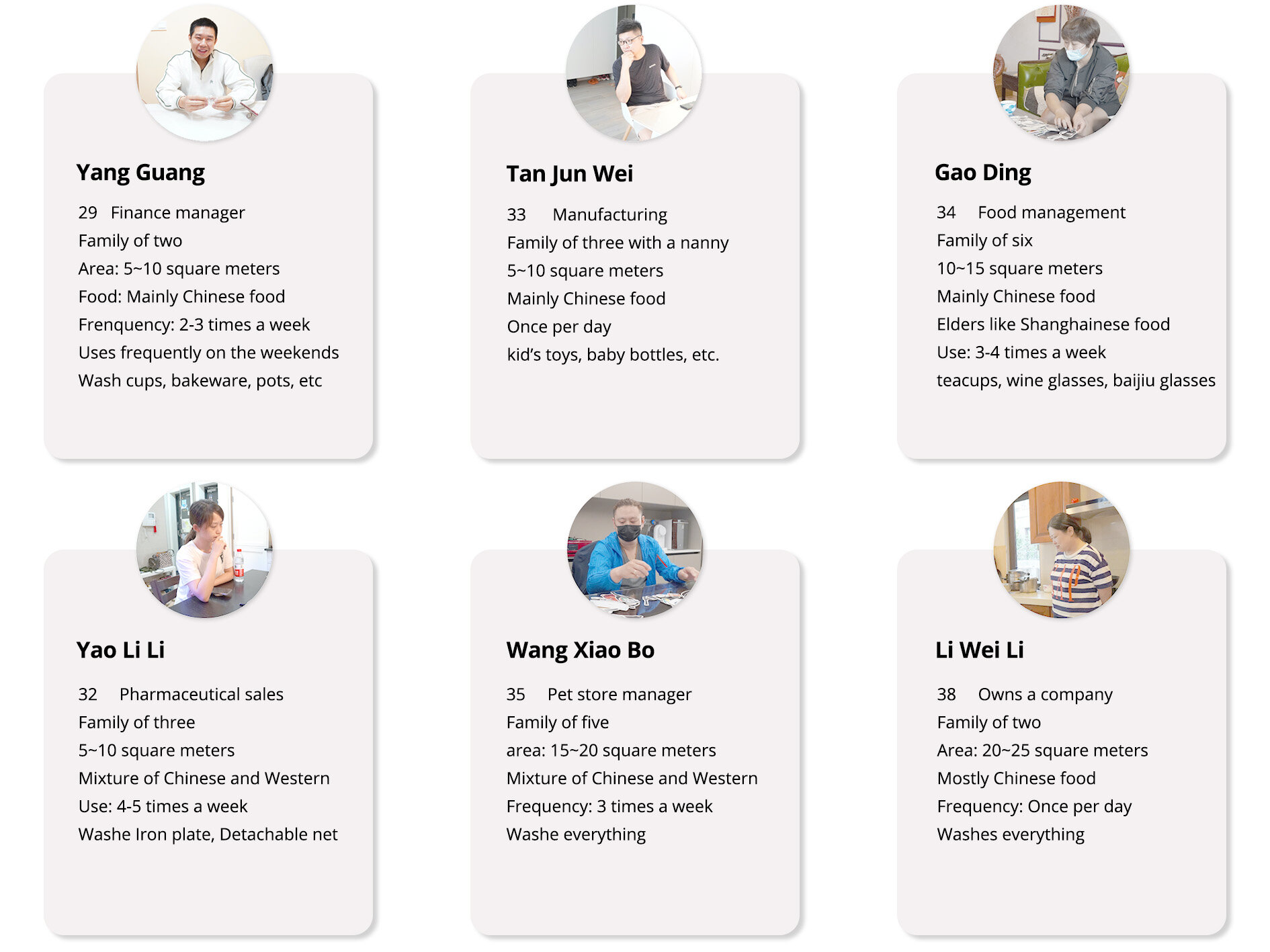
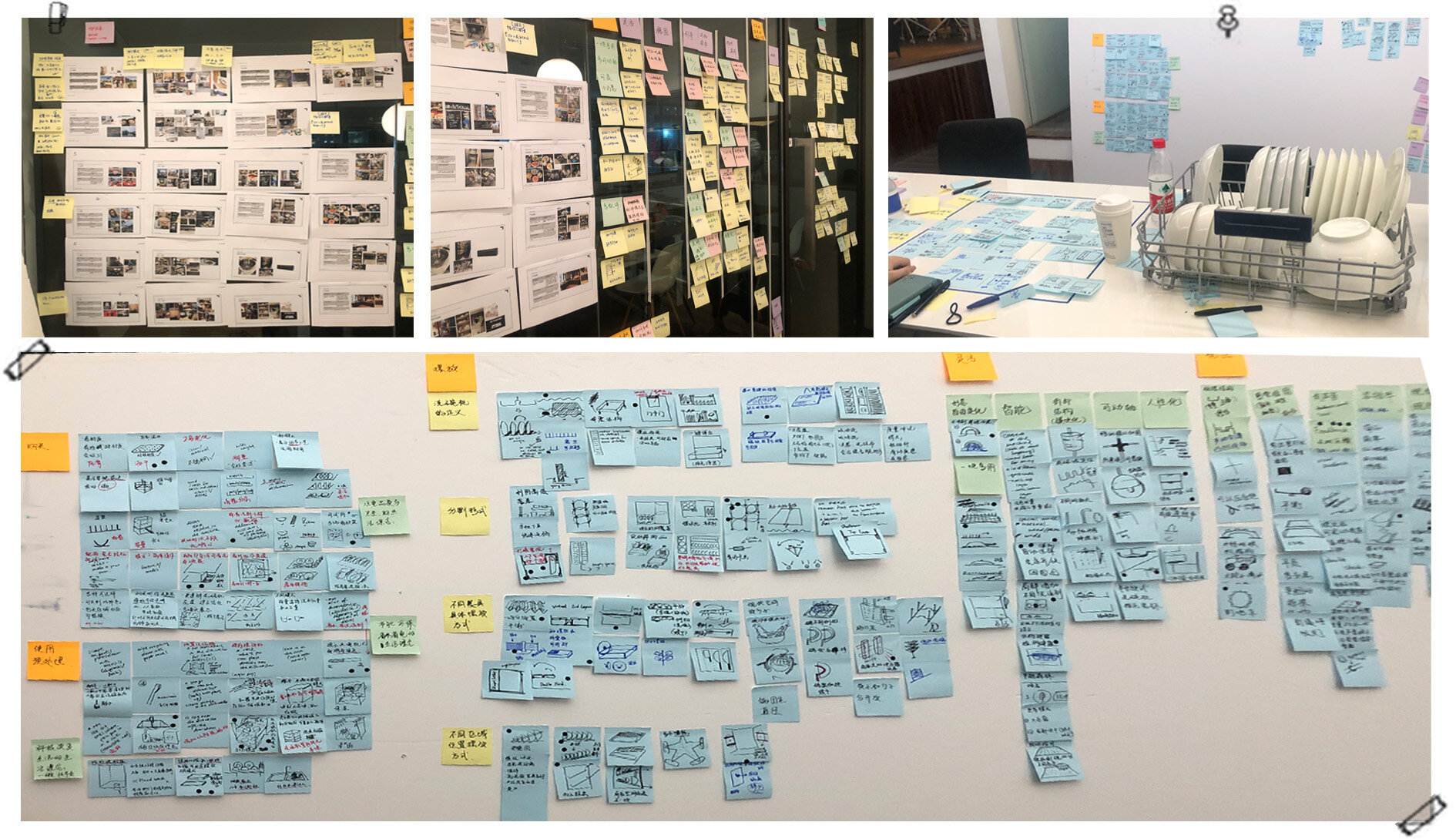
We dive deep into users’ potential needs that can be ignored easily in research. As a researcher, I think I should always think about the real reason behind words and keep asking myself “why”.
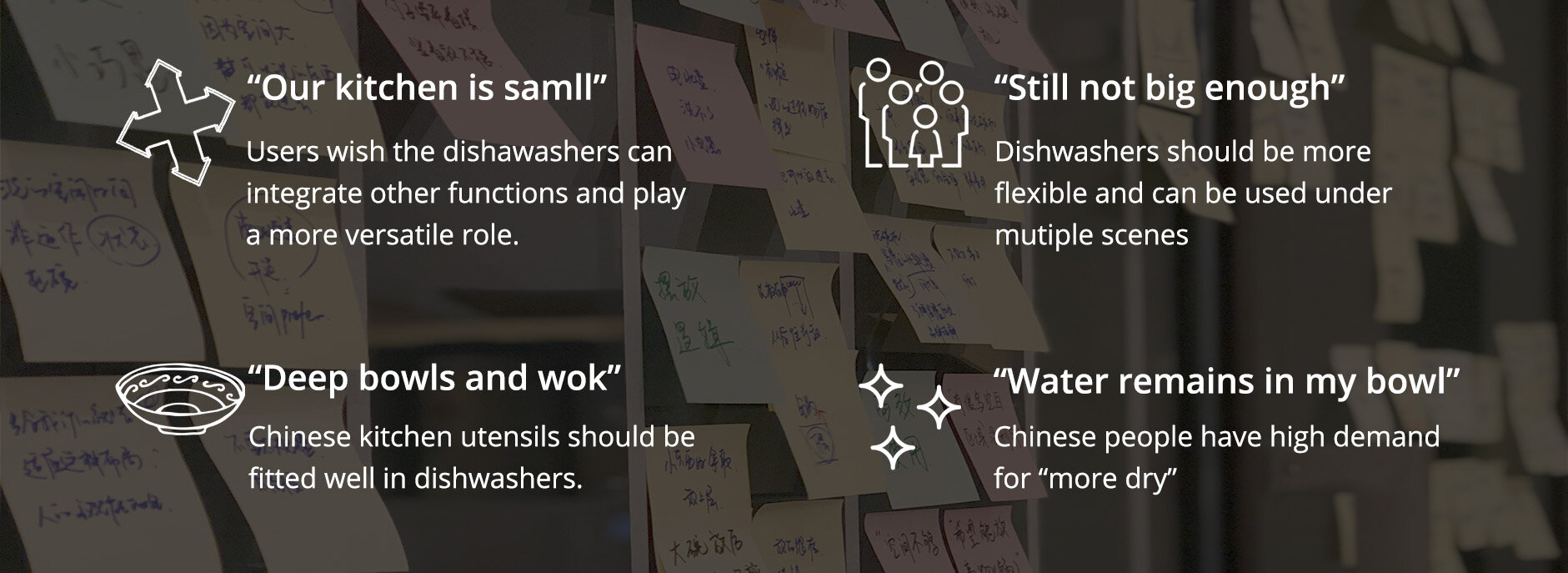
Chinese people think highly of the family. They invite their parents and friends for big meals during weekends and holidays. At this time, the demand for dishwashing will increase a lot. So they hope the dishwashers they bought can not only fulfill the daily need of their core families but also fulfill the need for a gathering scene.
Unlike western countries’ kitchen utensils have specific size standards: 6 inches, 8 inches….Chinese food use very different containers to serve. (Noodles bowls, Bamboo steamers, Sushi plates…) Our goal is to eliminate or decrease those constraints for the size and shape of utensils.
As the old Chinese saying goes ”Illness comes from your mouth”, Chinese people have a very high demand for clean and dry. The water remains problem can be solved by technical ways to make utensils thoroughly dry.
Design Goals & Principles:
· Versatile kitchen helpers
· Multi-scenes use
· Suit Chinese utensils well
· More dry (Technical Problem)
After defining the goals, we hold a design thinking workshop with a cross-functional team. It’s “a team sport” Marketing, Product Manager, Industry Designer, UX researcher….. Each role held a different priority and brought many different voices to the table. I contributed lots of out-off box ideas in this process.

We hold this workshop in a real kitchen and placed a dishwasher as physical stimuli. We encourage everyone to write down their ideas on “post-it” and put them up on a big foam board. Everyone was well engaged and inspired each other a lot.
After several rounds of bouncing ideas off of each other, we collected a large amount of out-of-box ideas. Here are some most promising ideas which include: redesign the dishwasher’s basket to fit Chinese utensils, flexible structures to load more stuff when needed, and add more feedback to guide unfamiliar users.
.jpeg)
After combining those similar ideas, was invited everyone in the workshop to pick up their favorite ideas based on availability and realizability. We also got their honest feedback which helps us to iterate our ideas.
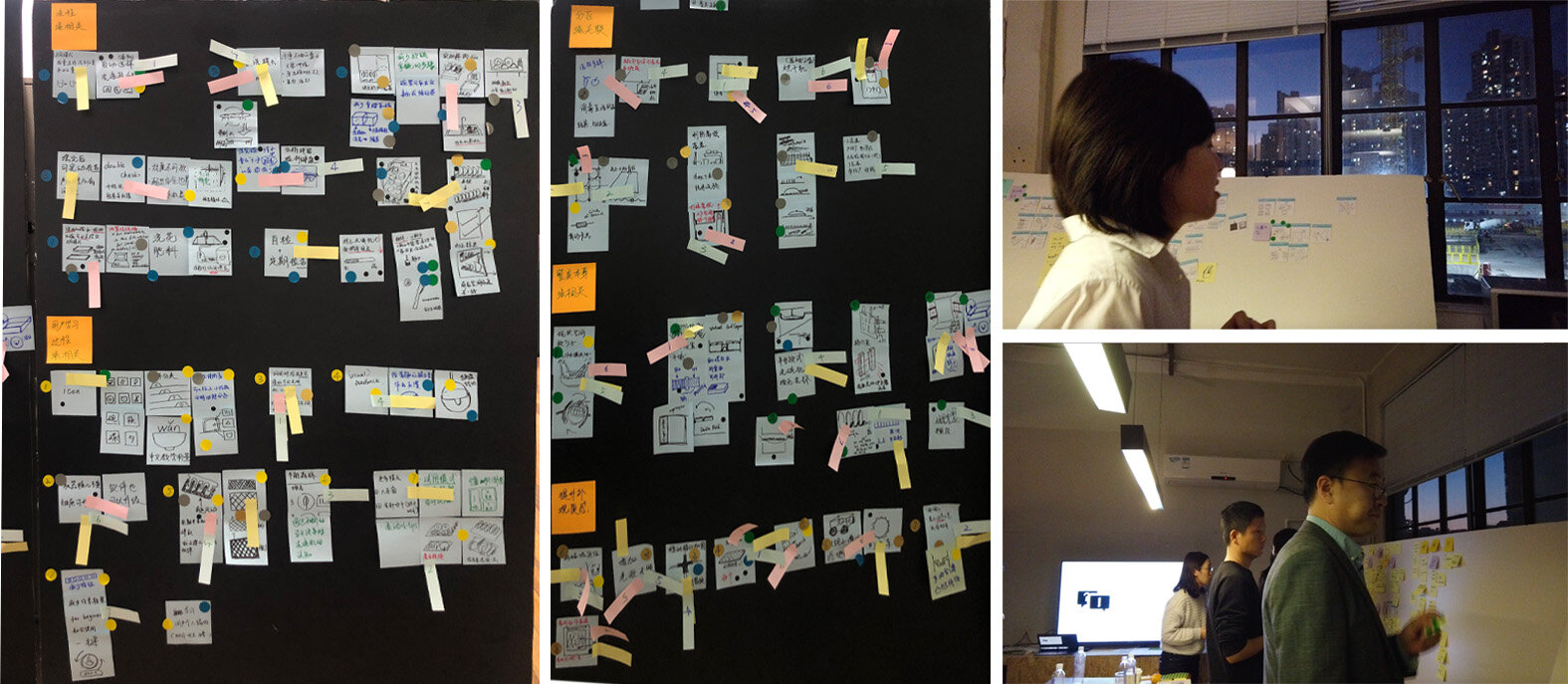
From paper card low-fidelity prototypes to 3D printer models. We handed over our final prototype to the “Simens Industry Design Team” to dive deep into all the details.
Our recommendations and prototypes based on solid user research results will be implemented into Simens’ new generation dishwasher for Asian Market soon. And some pain points that Chinese users brought up inspired the clients to improve in their design for all other countries.
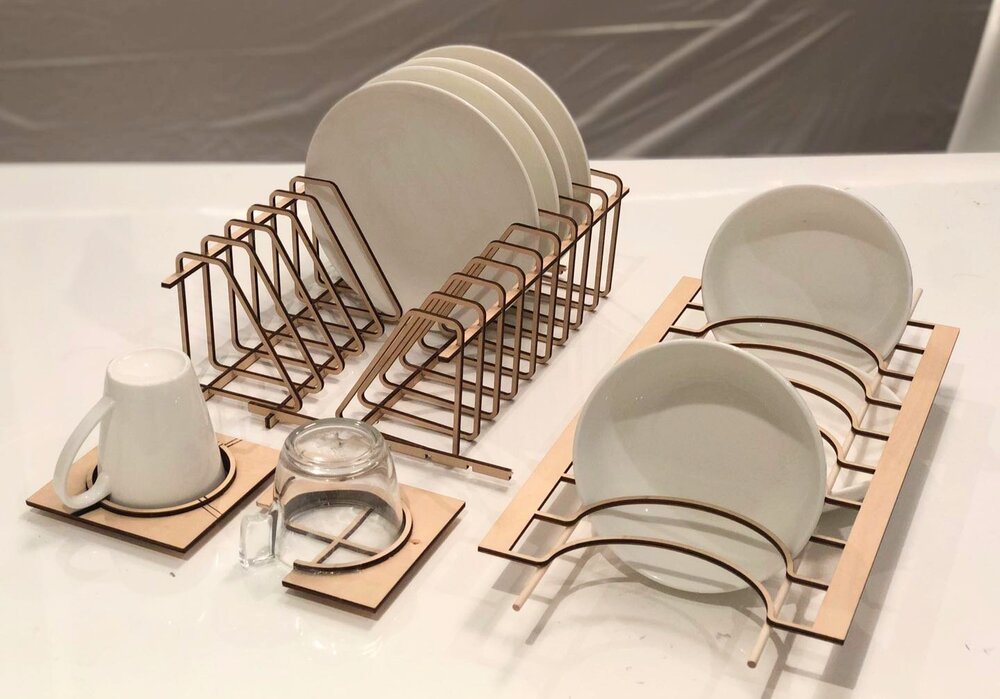
• Collaborating with a cross-functional team requires one to have patience and empathy. Iterating a final solution that satisfied all the technical, business, and design requirements.
• Analyzing qualitative data correctly was very challenging. Whether information is a valuable new finding that needed to be documented carefully or just an irrelevant noise that we should ignore.